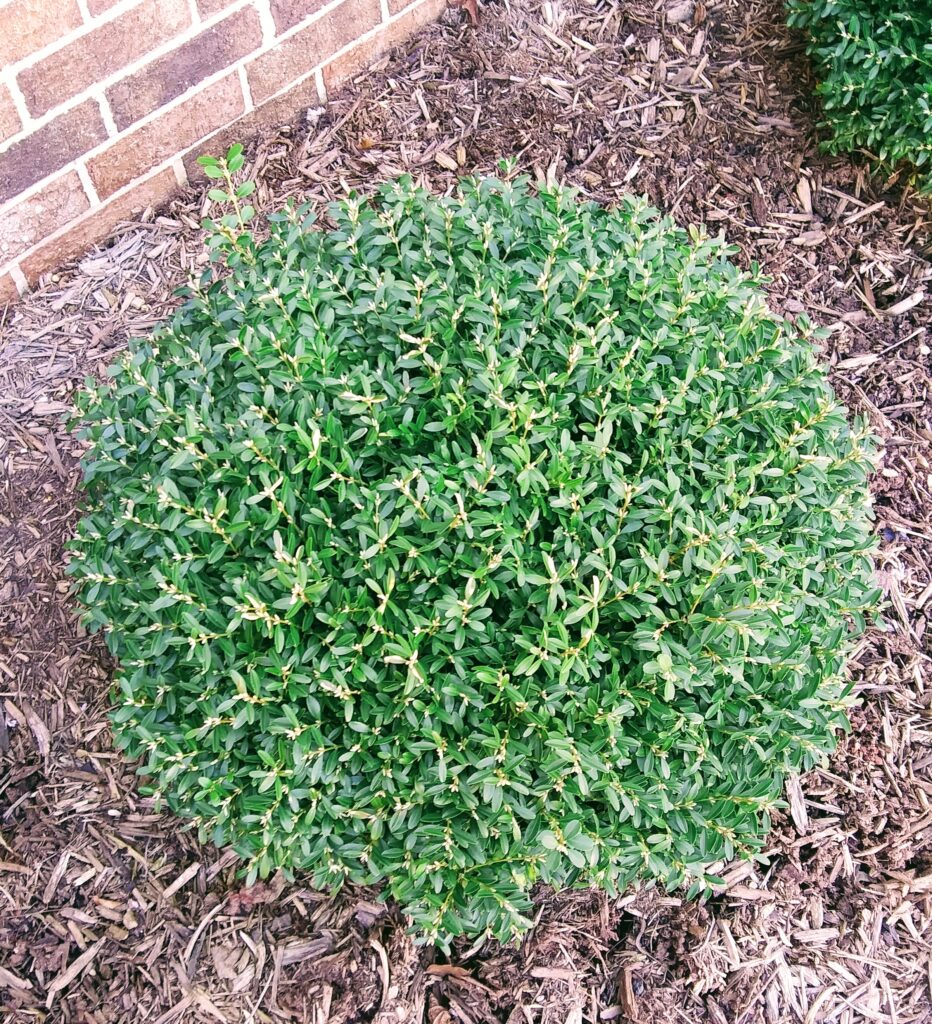I love boxwood plants, so it was an easy decision to sign up for a free online seminar on their care.
Today’s blog contains some of what I learned from the class and, also, from online sources. I am not a master gardener, only a blogger, so I’m not giving out any gardening advice only reporting.
Boxwood Plants History
The history of boxwoods goes back to 1653 when they were first planted in North America on Shelter Island in New York.
There are actually two types of boxwood plants, one, the American boxwood also known as the common boxwood and, two, the English boxwood.
The English boxwood plant has smaller leaves and the plant is denser than the common boxwood plant. English boxwoods are found in formal gardens with planned designs. In particular, I enjoy touring old historic sites and linger around the boxwood gardens.
Boxwood Facts
Boxwoods are popular plants because they are deer resistant, evergreen, and once established need little water. They also look great in hedges and landscaping. Around the holidays, boxwood sprigs are present in many decorations. Boxwoods, also, generally do well when grown in containers.

This Winter Gem Boxwood is in a large planter.
In the spring, I’ll surround it with bedding flowers.
Boxwood Plants Bronzing
During the winter months, sometimes boxwood plants have what is called bronzing on their leaves. Bronzing is when the leaves lose their color and are slightly bronze looking. This is due to stress of the cold winter weather but once the weather improves the shrubs will regain their green color.
Boxwood Blight Disease
In 2011, boxwood blight came to the United States, and began infecting plants and gardens. Boxwood blight causes the plant’s leaves to develop spots with black stems due to a fungus infection. Eventually, the boxwood leaves die and fall off.
Boxwood blight is brought on by temperatures over 77 F. degrees and wet conditions. It is spread by people, animals, boots, tires or by gardening tools.
Treatment of Boxwood Blight
- Boxwood blight is manageable by disposing of any fallen leaves and keeping the area under the infected plant clean of debris.
- The plant’s water supply and wetness must be carefully monitored and controlled.
- Apply fungicide to infected plants.
- Disinfect garden clippers and other tools with disinfectant wipes to avoid spreading the disease.
- When planting new plants, try boxwood blight-resistant plants.
Phytophthoras of Boxwood Plants
Phytophthora is a pathogen found in the soil which infects trees and woody plants like boxwoods. It is caused by plants being in wet soil for long periods of time.
Plants infected with Phytophthoras look like the top is water stressed with wilted leaves so it can be difficult to identify at times.
However, phytophthoras goes deep into the roots of the plant. It spreads in warm moist conditions. Good water management with this disease is, also, important.
Plants can be treated and managed with phytophthoras but presently, there is no cure for it.
The below photograph is of a healthy boxwood plant.

Pruning Boxwood Plants
Boxwood plants occasionally need a light pruning to help the plants maintain their shape. If your boxwood plant is near a walkway or driveway, then the plant might needs trimming at some point.
It is better not to shear the tops of the plants in straight lines as this will only encourage the growth at the top of the plant.
It is better to take out plugs of the plant to allow for air circulation and sunlight to reach the inner plant. This will keep the plant healthy. Then do a light shearing following the shape of the plant.
Boxwoods are slow growing plants so it is better not to over prune the plants as it will take a long time to grow back.
American Boxwood Society
The American Boxwood Society, is a nonprofit, begun back in 1960 and is an organization dedicated to boxwoods. The American Boxwood Society, also, does research to expand the scientific knowledge of boxwood plants.
On the American Boxwood Society’s website, not surprisingly, they have a report on the boxwood blight.
Learning Experience on Boxwood Plants
Before attending this online seminar, I never even heard of boxwood blight so I am glad I learned something new to keep my boxwoods healthy.
Everyone else, enjoy those wonderful boxwood plants.
David Yost from Merrifield Garden’s online presentation on Boxwoods; Wikipedia, UCIMP, www.gardeners knowledge.com and the American Boxwood Society’s online webpages were used to research today’s blog topic.

